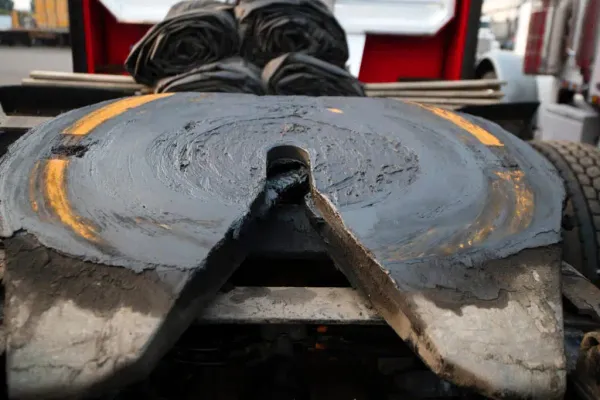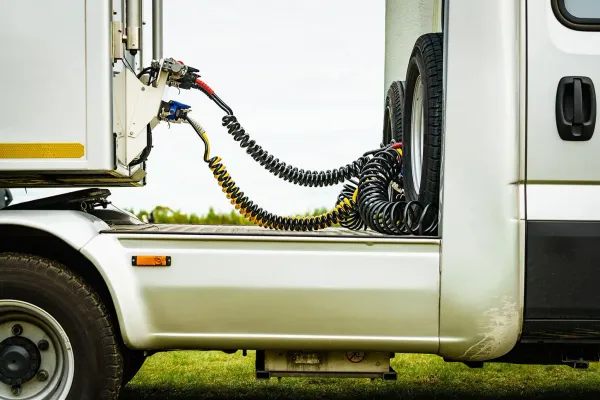Fleet Maintenance: Why a Good Schedule Is Better Than a Good Toolbox

There’s a common belief in trucking yards and maintenance shops across the country that the backbone of any successful fleet operation lies in the quality of its tools. Walk into any repair bay and you’ll find no shortage of pride in well-stocked cabinets, heavy-duty lifts, diagnostic machines, and the kinds of hand tools mechanics guard like heirlooms. And there’s no question—good tools matter. But over the years, through thousands of hours spent advising fleet operators and visiting yards from California to the Carolinas, I’ve come to believe something else just as firmly: the best toolbox in the world can’t make up for a bad schedule.
Fleet maintenance isn’t a mechanical problem. It’s a planning problem.
Time and again, I’ve seen the difference between fleets that plan and those that react. It doesn’t matter how many high-end scanners you have if your trucks are breaking down on the road, if your mechanics are swamped with emergencies, and if your drivers are stuck waiting for the green light while repairs get figured out. Those are symptoms not of bad equipment or lazy staff—they’re symptoms of a system that’s built to fix problems rather than prevent them.
The fleets that consistently outperform the rest don’t necessarily have the fanciest gear. What they have is rhythm. They have a schedule that doesn’t bend every time the freight market spikes or when things get busy. They plan for downtime. They build in checks and services that seem small on paper, but which prevent the big problems that send trucks to the shoulder of the road in the middle of the night.
When maintenance is scheduled—truly scheduled, not just hoped for—it becomes invisible. That’s the irony. No one notices the truck that doesn’t break down. The delivery that arrives on time. The driver who doesn’t call dispatch at 2 a.m. because everything is running the way it should. A good schedule doesn’t get credit because the absence of chaos isn’t dramatic. But it is valuable. And it’s rare.
Think about this: most fleets have a better process for fueling than they do for inspections. Fueling is routine. Drivers know when, where, and how they’ll top off. But ask five different drivers from the same fleet how often they’re supposed to have brakes checked, and you might get five different answers. That kind of inconsistency is where avoidable failures begin.
And the damage doesn’t stop with the truck. The ripple effects are massive. A blown hose or faulty sensor on the road can take a driver off the clock for hours. That’s lost productivity, sure. But it’s also driver morale. It’s the sense of confidence a person has when they start their day. If every trip feels like a gamble—if the equipment isn’t trustworthy—then even the best drivers will start to feel disconnected. They’ll start looking elsewhere. And in an industry already struggling to retain experienced operators, that’s a cost few companies can afford.
Of course, some breakdowns are unavoidable. No schedule can prevent every failure. But the goal isn’t perfection—it’s predictability. When maintenance is built into the culture of a fleet, not just its operations, you start to see other changes. Mechanics stop firefighting and start thinking ahead. Drivers begin to report issues sooner because they believe they’ll actually be addressed. Equipment lasts longer, not just because it’s fixed, but because it’s respected.
There’s also a financial dimension to all of this. Not long ago, I sat with a mid-sized carrier in the Midwest that ran a few dozen trucks and swore they couldn’t afford to take trucks off the road for regular preventive maintenance. “We’ll lose money if they’re not running,” the operations manager said. But when we dug into their books, what we found was that they were already losing more money in emergency repairs, rush-part markups, after-hours labor, and towing than they would’ve spent on a routine schedule. The issue wasn’t that they couldn’t afford to maintain their fleet—it was that they couldn’t see how much they were already paying for the lack of it.
A good maintenance schedule isn’t just about frequency. It’s about clarity. Everyone from dispatch to drivers to shop techs should know what’s happening and when. It should be written down, automated where possible, and immune to the daily chaos that can knock the best intentions off course. Maintenance time should be sacred. If trucks only get attention when they break down or when a DOT inspection looms, then the system is broken. And patching it up with better tools or faster mechanics only masks the issue.
The fleets that win—year after year, regardless of economic swings—aren’t always the biggest. They’re the ones that act with intention. They don’t chase their problems; they steer around them. They don’t wait for parts to fail; they replace them on schedule. They don’t treat maintenance as a nuisance; they treat it as a form of respect—for the equipment, for the drivers, and for the customers counting on them.
In my early years, I worked with an old-school fleet manager who ran a lean operation but never skipped a single scheduled inspection. He’d tell new drivers, “Trucks are like cattle—you keep them fed and checked, or they’ll die on you when you need them most.” It was a simple analogy, but I’ve never forgotten it. Because beneath all the spreadsheets, telematics, and industry jargon, that’s what it comes down to: attention and timing.
I’m not here to say that tools don’t matter. Of course they do. Skilled technicians with the right equipment can work miracles. But no amount of wrench-turning can make up for the loss of a load, the loss of trust, or the loss of a driver’s confidence. Those things aren’t fixed in the shop. They’re protected by planning.
So the next time your fleet’s in a lull—before the busy season kicks in or before your next round of equipment orders—ask yourself a simple question: do we have a maintenance program, or just a repair habit?
Because if it’s the latter, no toolbox in the world is big enough.



